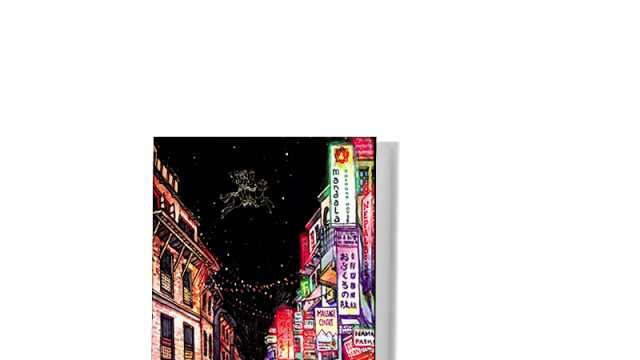The Goa of Kathmandu, the rock ‘n’ roll beats that evolved by design: Rabi Thapa’s biography of Thamel brings together all the aspects of the area, and its history. Put together by the Newars who according to legend had escaped from a ravenous demoness, Thamel was designed to take care of foreigners visiting Kathmandu since the Hindu inhabitants were not allowed to consort with ‘untouchables’. However, the name was a corruption of the shrine at the heart of the place, Tabahi, which did not radiate any of its serenity to Thamel. Freak Street in the 70’s was where the action moved from Goa, with the ganja smoke and the mystic haze following the flower children.
An island in the middle of Kathmandu, Thamel with its isolation is easy to typify—it was the place where Westerners came looking for a revelation, rubbing shoulders with the locals in Jhoche, which quickly became Freak Street. For many it was a short cut to Shangri La, a route which went across Asia. And the mystique of the foreigners quickly rubbed off on young Westernised Nepalis. To them it was the place of sleazy nightclubs, drug peddling, gangs and all those things that were not permitted in the rest of Kathmandu. To them, Thamel was cool. They could hang around at night, belching beer and clutching meaty wraps confident that their families would not spot them. That is how today’s Thamel was born—a commercial hit rising out of the darkness.
But the foreigners and the privileged Nepali brats are not the voices of Thamel—Thapa has inserted in the book some disorientating first-person narratives which hit the pages running without warning—a sex worker in a cabin restaurant, a hair dresser—people forced to provide all kinds of services just to earn a living. These voices from the bottom layer of Thamel provoke a pause.
But Thamel is ultimately a male narrative—on its streets, women are either whores or child goddesses. Thapa’s mother used to scamper past certain street corners haunted by drunks, including Thapa’s own uncles at times.
People came to Thamel to escape from their everyday lives—it was a kind of narcopolis where the drug lords ran dhandas and punished territorial infringement with a harsh hand. Fires and earthquakes—including the last violent earthquake of 2015—added their own notes of violence. Ashes of burnt books joined the drug-laden air when a beloved bookshop went up in flames and conspiracy theories were rife in the alleyways.
Thapa uses his own life as a kind of parallel growth to Thamel’s, taking himself as a metaphor for the privileged youth. For him and his friends, with the coming of swank hotels in and around the area, the action moved to Thamel’s streets, which continued to be fringed with historical truths. There is a temple dedicated to the demoness here but she has been transformed into a maternal protector instead of a destroyer—Thamel transforms all those who come in contact with it.
In the end, Thamel is about compromise between Nepali and western culture, swivelling from one end of the spectrum to another. Thapa intersperses his account of the place with post-earthquake findings so that the narrative seems to shift focus between the incessant pulse of the past and the fractured present, swaying like a flâneur’s walk through the streets he knows so well.




